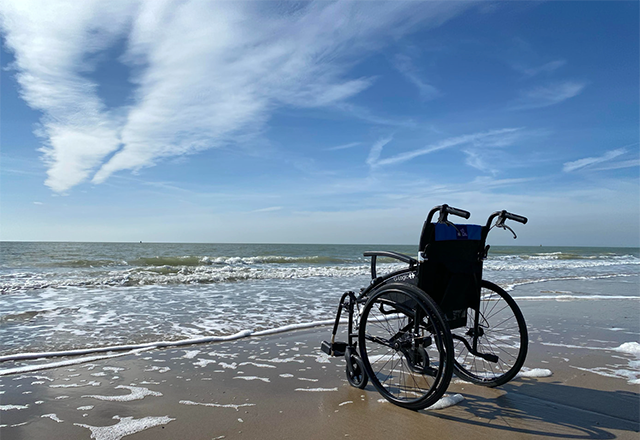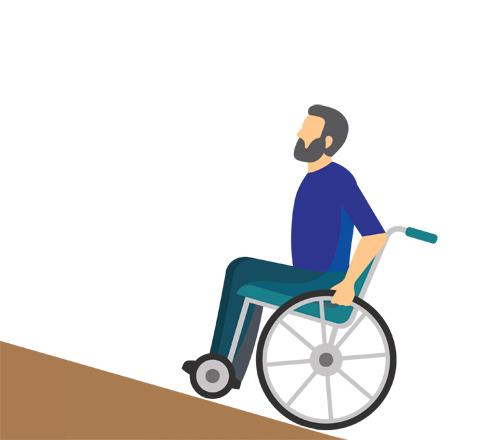You are here
Accessible tourist sites in Jordan remain a distant goal, say activists
By Rayya Al Muheisen - Apr 16,2023 - Last updated at Apr 16,2023

Representative image (Photo courtesy of unsplasy/Hans Moerman)
AMMAN — Jordan's tourist attractions remain largely inaccessible for people with disabilities, propelling a “persistent demand” from activists to prioritise accessibility.
Despite the authorities’ efforts to improve mobility for persons with disabilities, many solutions are “temporary and short-term”. This has led to persons with disabilities being denied certain rights such as accessing tourist sites and public beaches, according to activists. Despite some progress, there remains a need for sustainable and long-term solutions to ensure that Jordan’s public spaces can be equally enjoyed by all.
Jihan Swaiti, 53, was born with a disability, and is a wheelchair user. Swaiti is also a human rights advocate.
“Despite promises by authorities to facilitate movement and mobility of persons with disabilities, provided that it is enshrined in law and should come into effect, we’ve been waiting for so many years,” Swaiti told The Jordan Times.
A person with a disability is an independent person who has the right to enter archaeological and tourist sites without asking others to carry them, Swaiti said.
“It is nearly impossible to visit the Roman Amphitheatre, Amman Citadel, Wadi Rum, Dead Sea and Aqaba beaches without assistance; someone has to carry me in my wheelchair,” Swaiti added.
Petra, however, offers golf carts — free of charge — that transport tourists with disabilities. “In Madaba, there is also a museum that is accessible for persons with disabilities,” said Swaiti.
Swaiti also called for more public restrooms and health facilities equipped for persons with disabilities.
“According to the latest figures from the Department of Statistics, 11-12 per cent of the population are persons with disabilities,” Rami Zalloum, a disability rights activist, told The Jordan Times.
The statistics Zalloum cited refers to a 2015 report.
The Law on the Rights of Persons with Disabilities Act, Law No. (20) for the Year 2017 guarantees the right of movement and mobility to persons with disabilities.
The law mandates that buildings, roads, and facilities in both the public and private sectors are constructed in a manner that ensures accessibility for all. This includes making necessary adjustments in accordance with the Building Code Requirements for Persons with Disabilities, as outlined in the Jordan National Building Code, as well as any other special standards approved by the council.
“It is both a social responsibility and a right granted by law” to provide persons with disabilities with the means to access archaeological sites, Zalloum noted.
“It’s a long-term investment. Persons with disabilities constitute at least 11 per cent of the population. We are talking about at least one million potential domestic tourists,” he added.
The return on investment in accessibility modifications will be financially beneficial for authorities, Zalloum noted, “especially if we earn a global reputation for accessible archaeological sites”.
Related Articles
AMMAN — Most archaeological sites in Jordan are inaccessible for people with disabilities and facilitating the access to those locations is
AMMAN — The majority of Jordan’s tourism attractions are marked by poor accessibility standards despite some progress, according to activist
AMMAN — Hadeel Abu Sufa, a young Jordanian woman, said she is barely able to go to any supermarket to buy groceries, or any store to get som


















